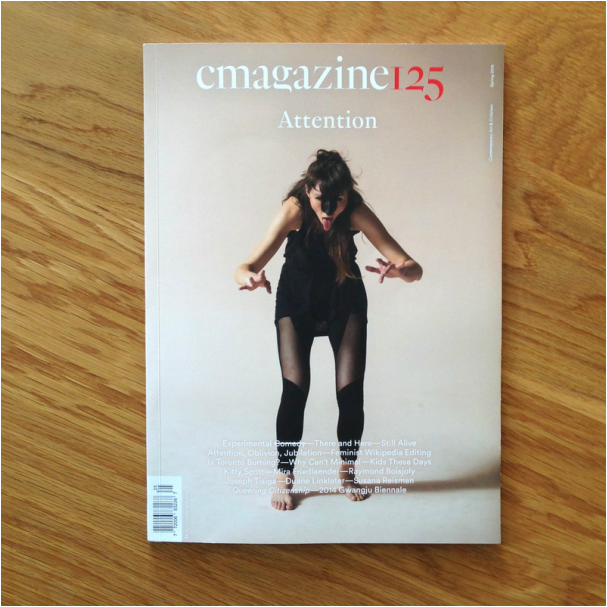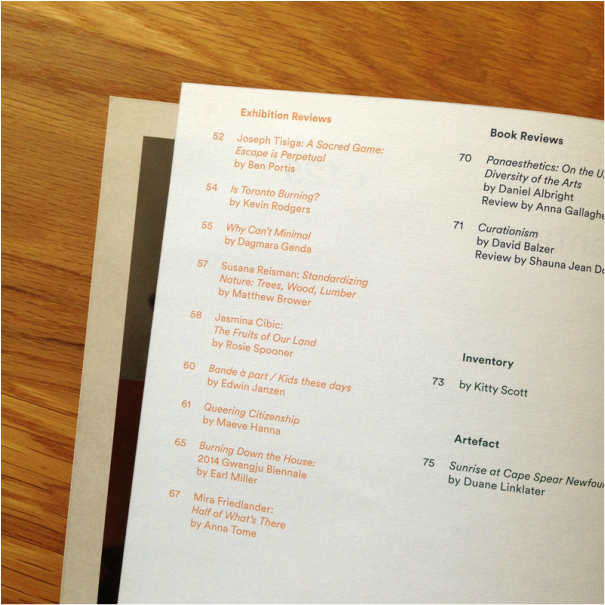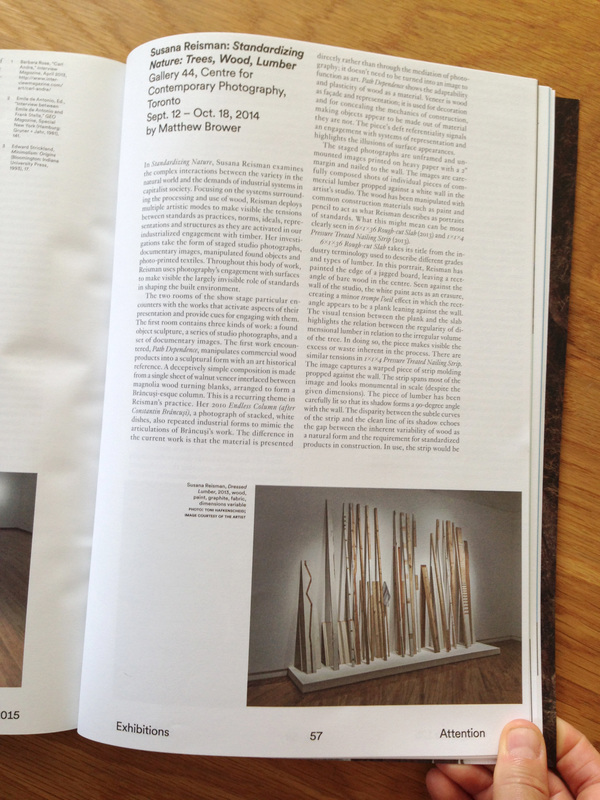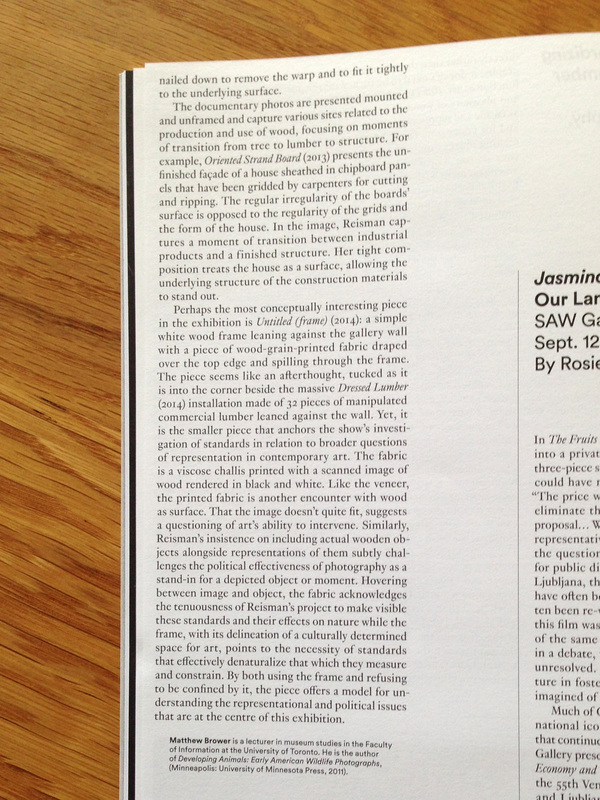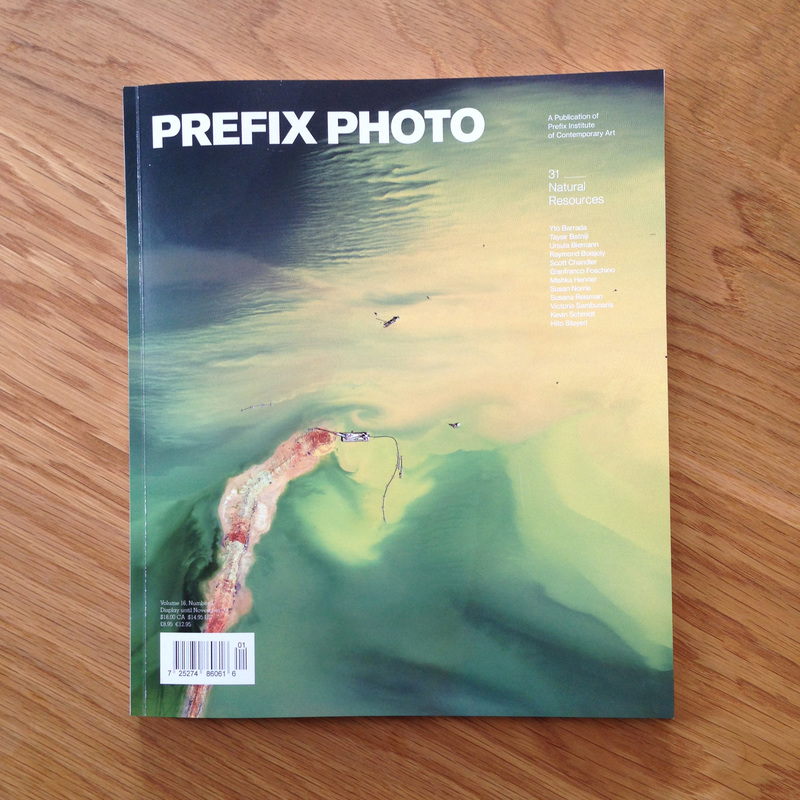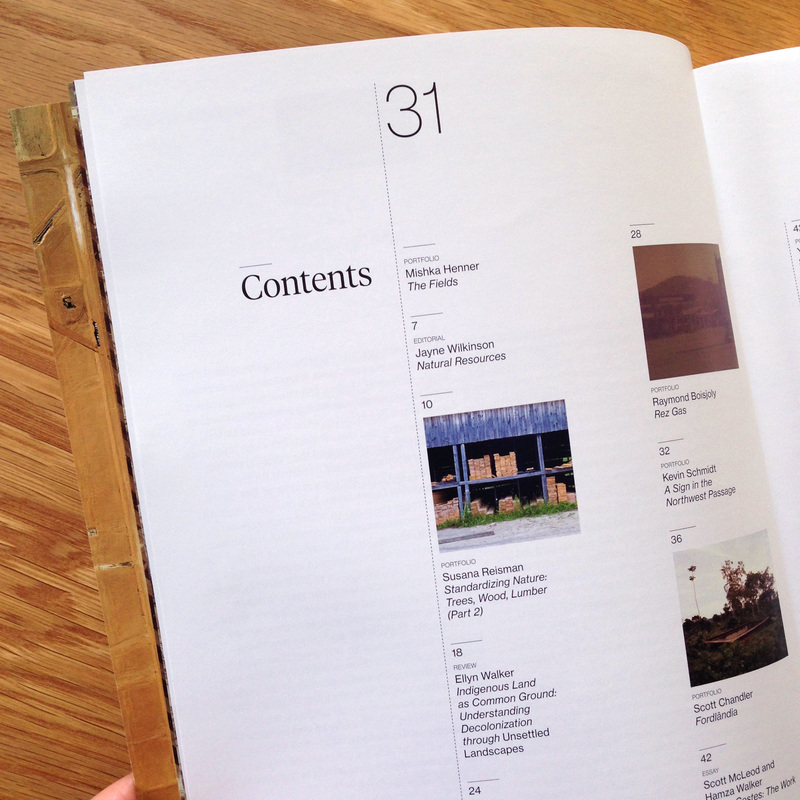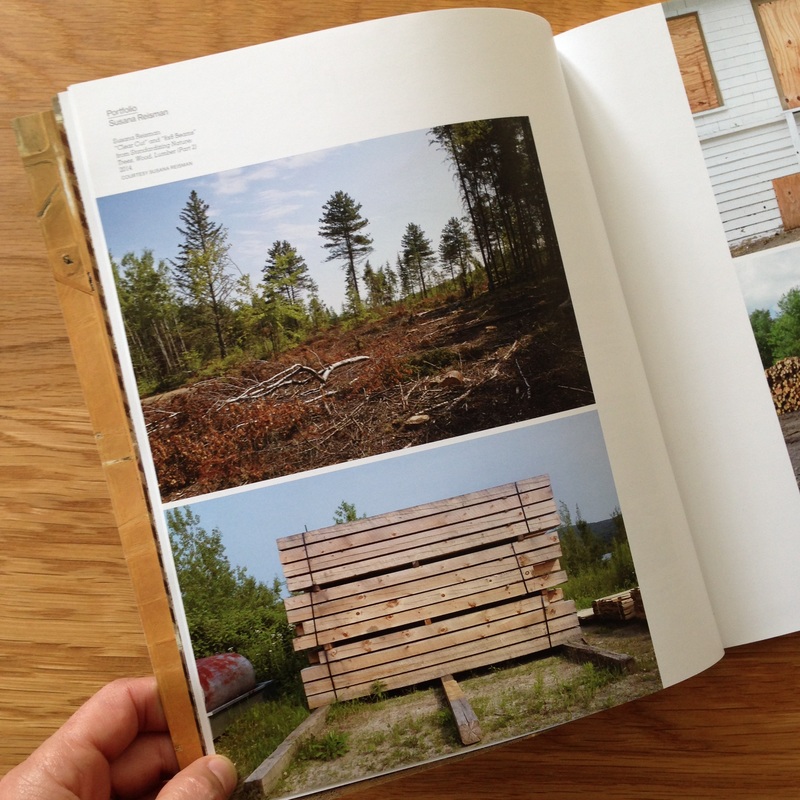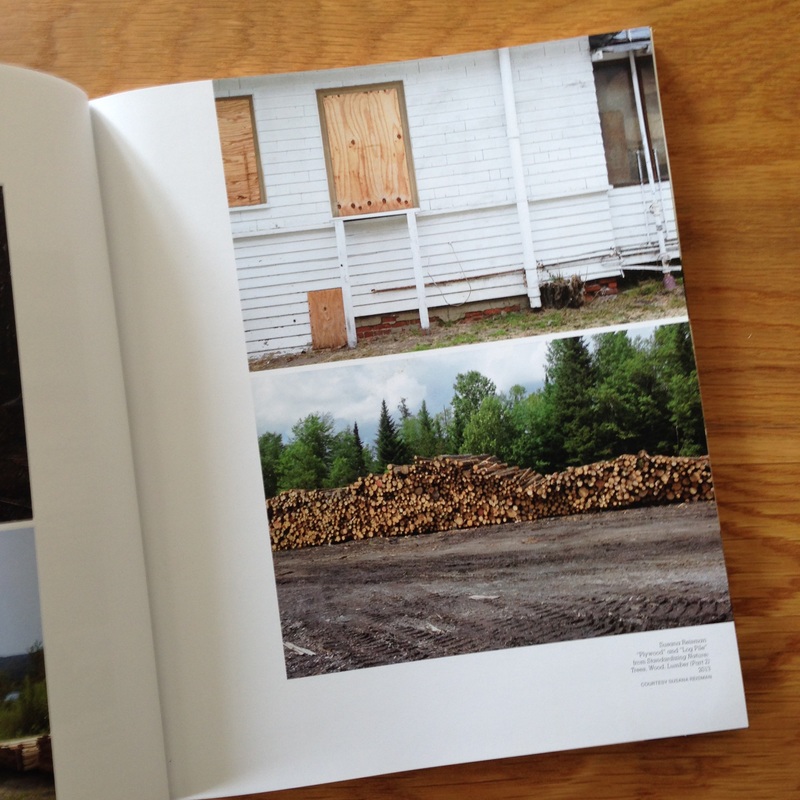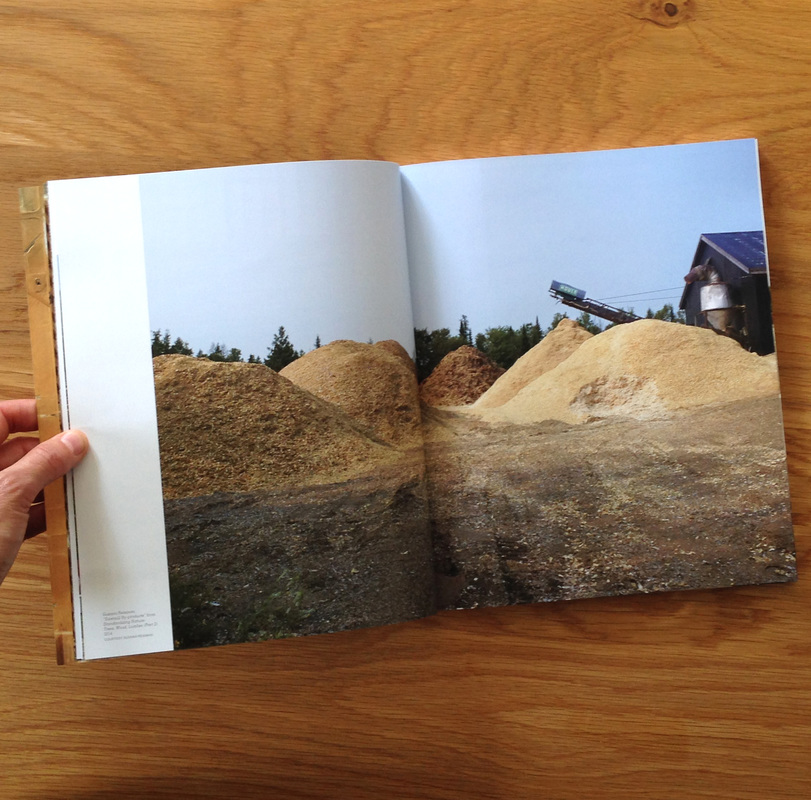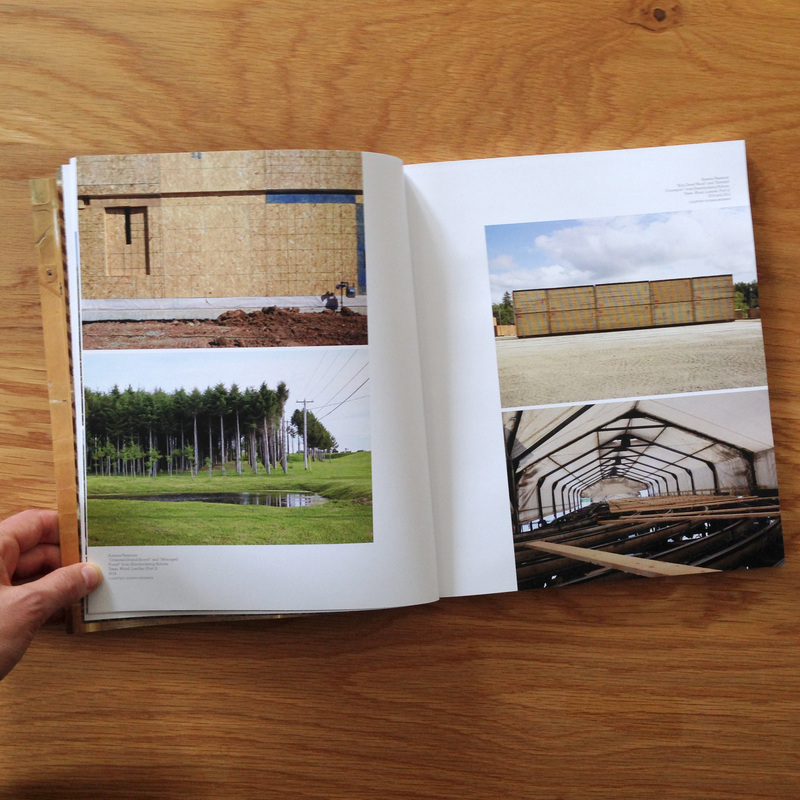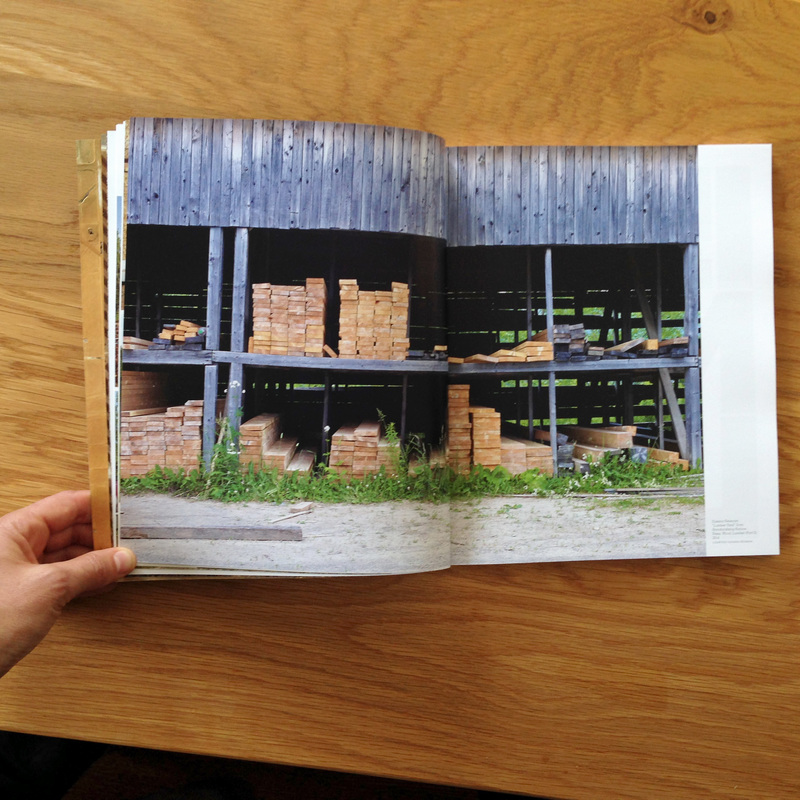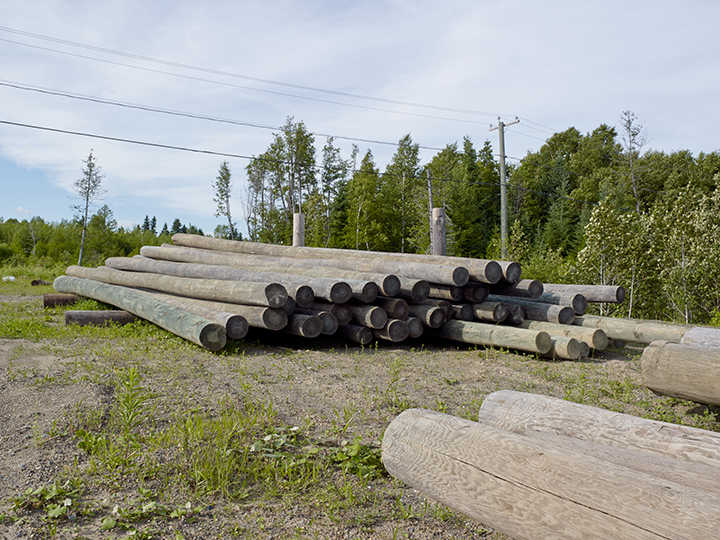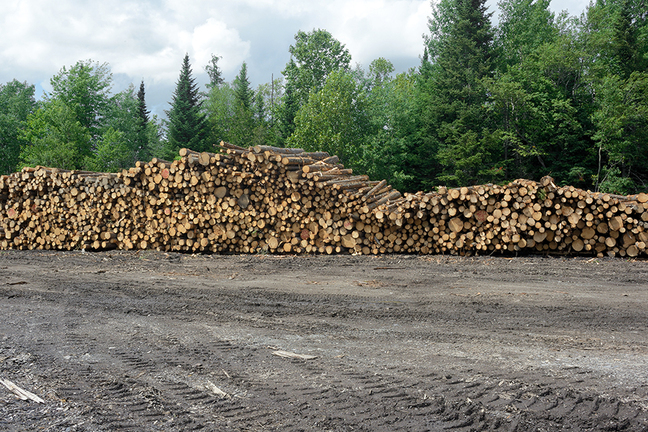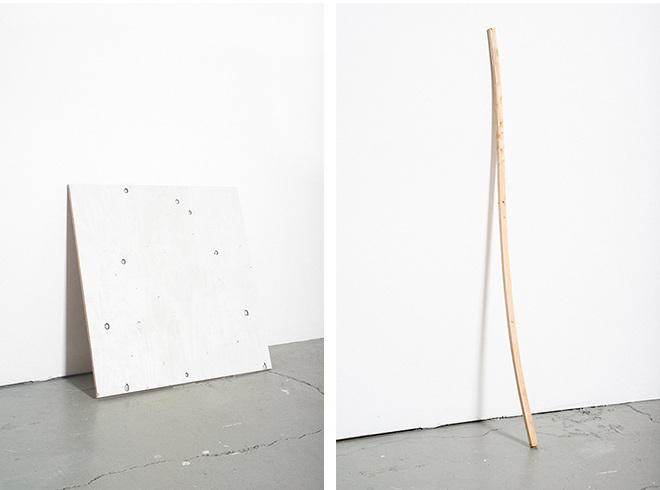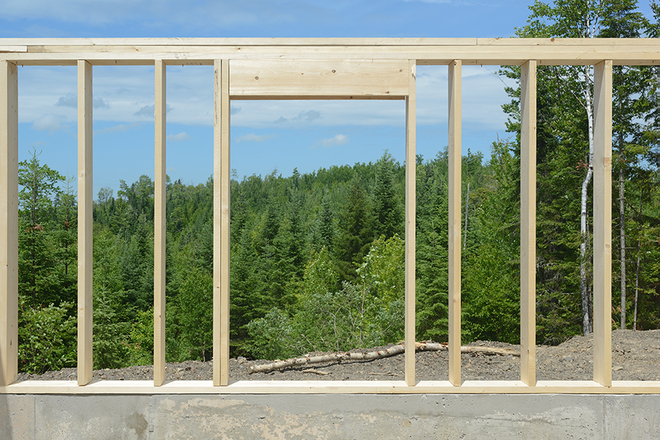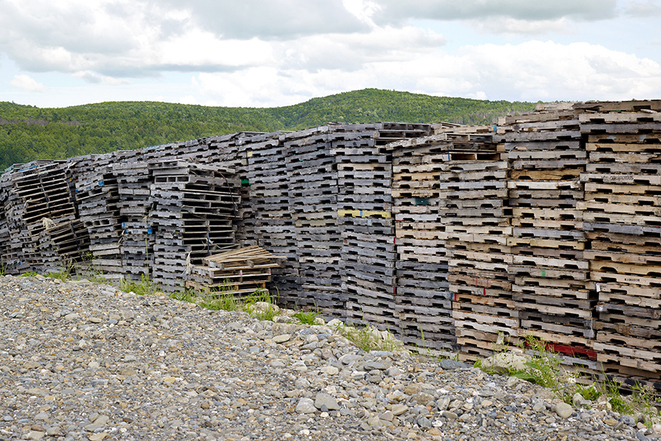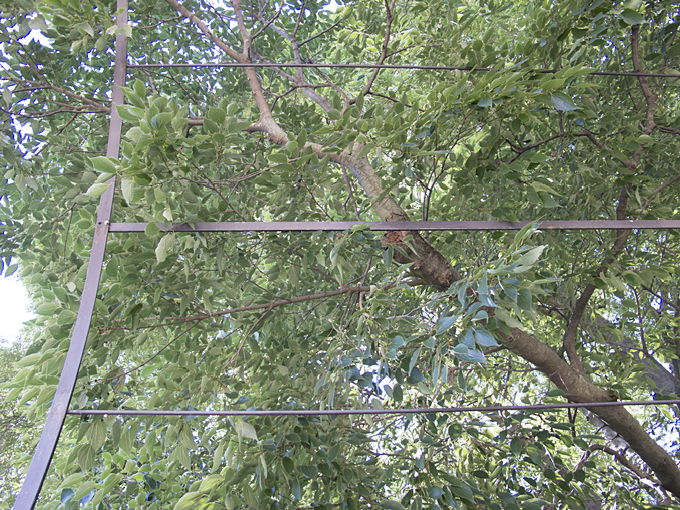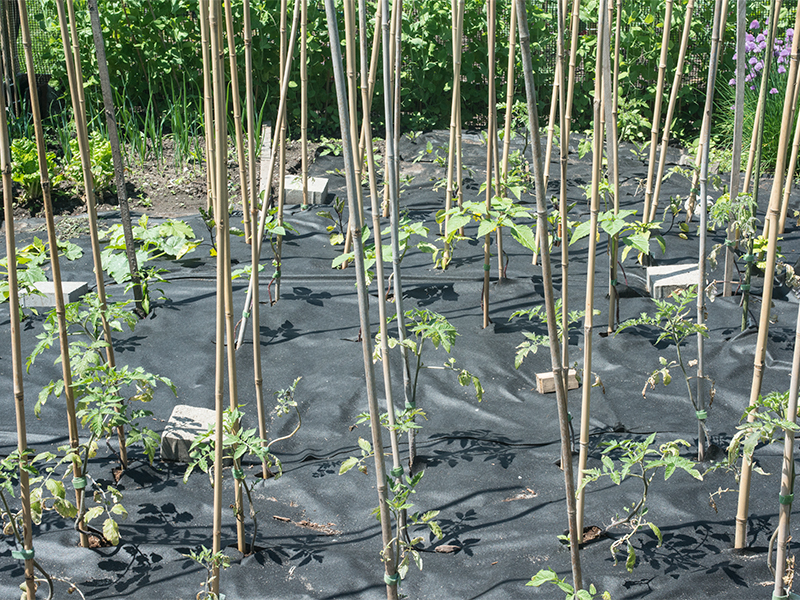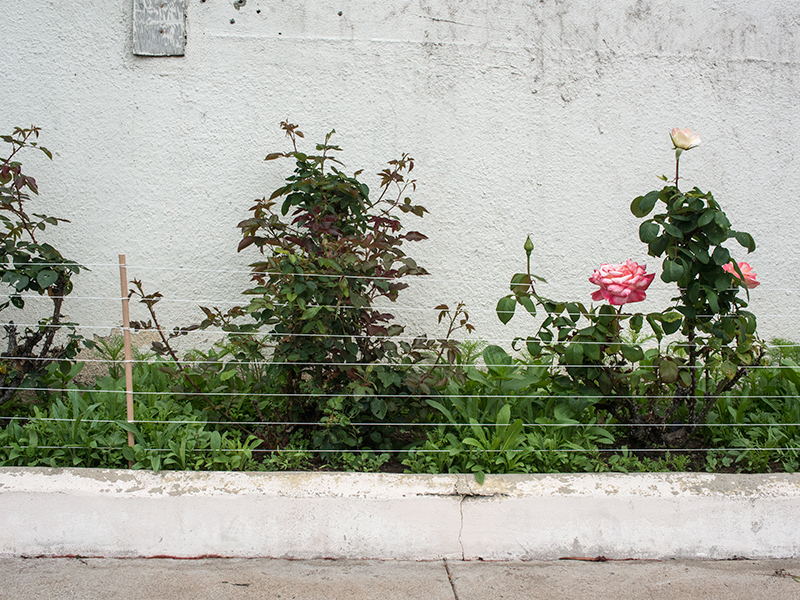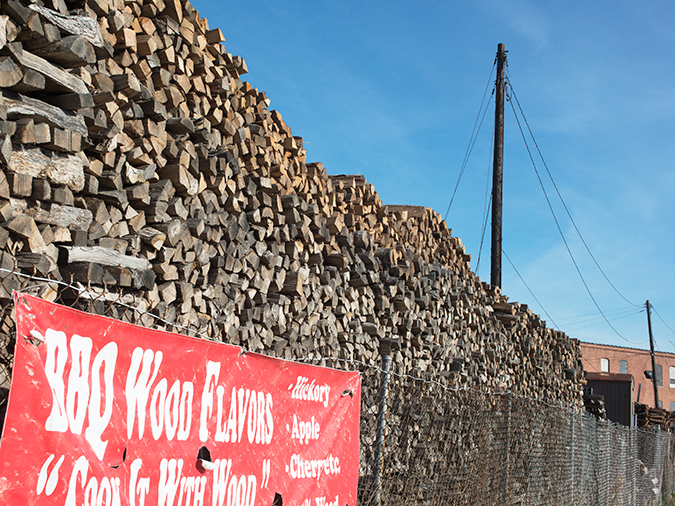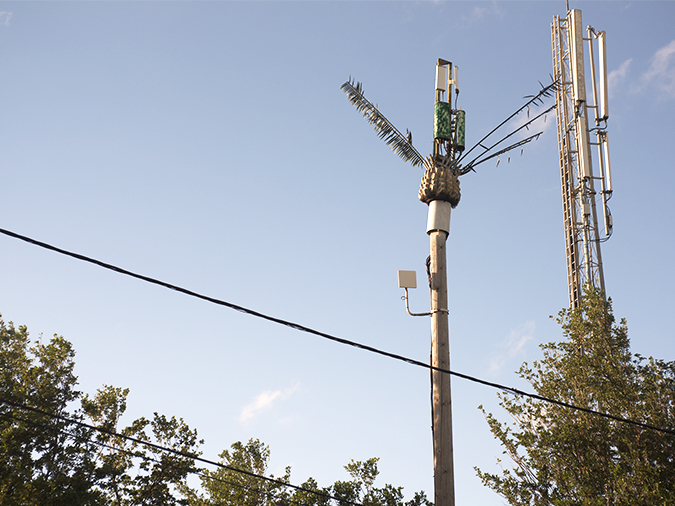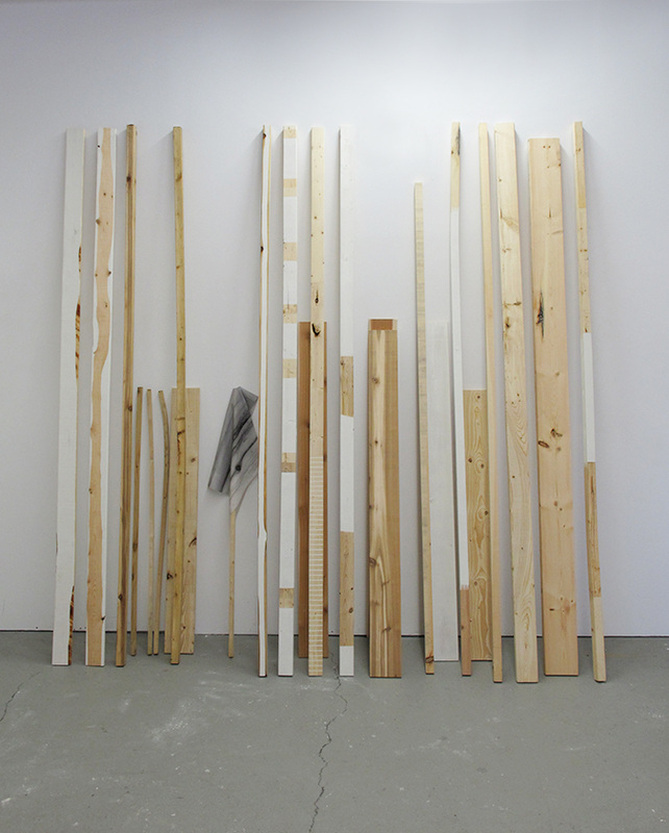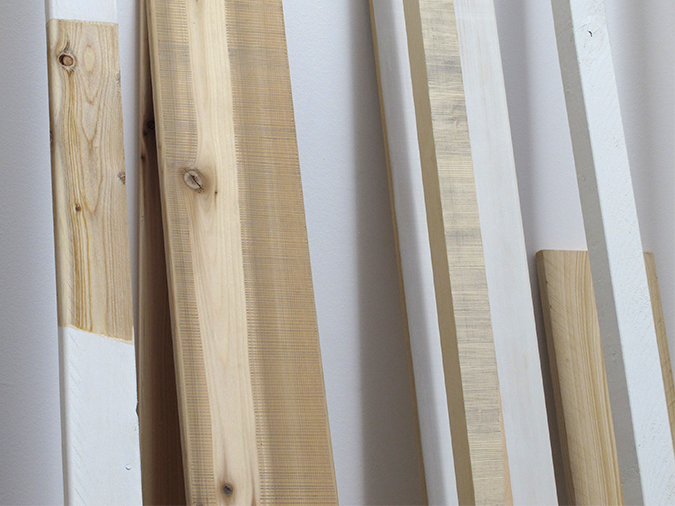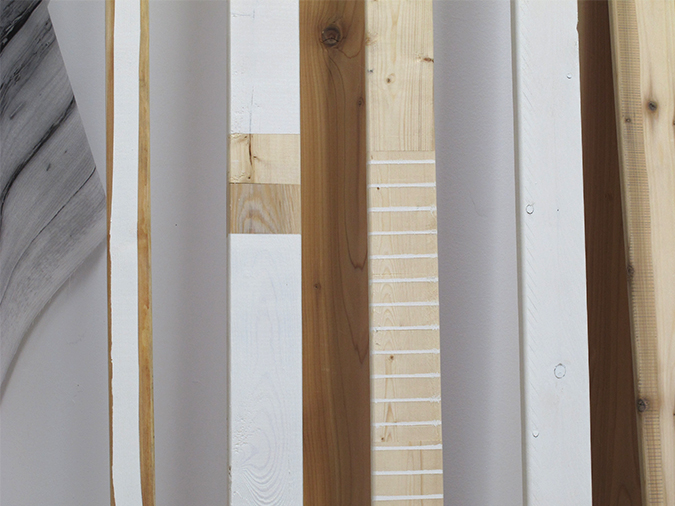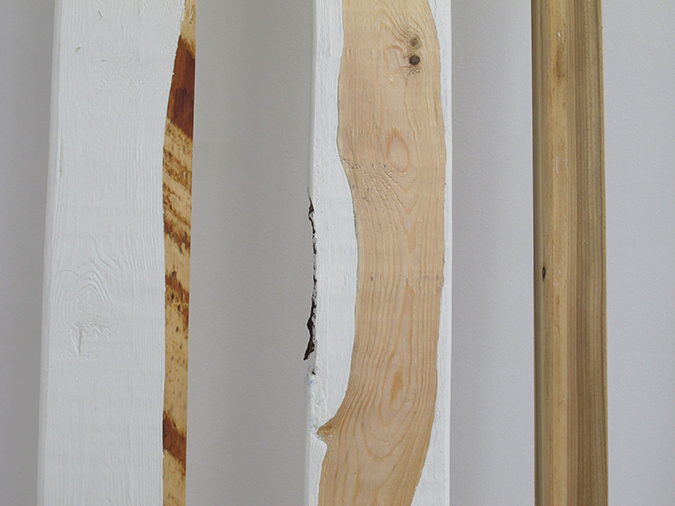C Magazine - Issue 125: Attention
Review of Exhibition by Mattew Brower
In Standardizing Nature, Susana Reisman examines the complex interactions between the variety in the natural world and the demands of industrial systems in capitalist society. Focusing on the systems surrounding the processing and use of wood, Reisman deploys multiple artistic modes to make visible the tensions between standards as practices, norms, ideals, representations and structures as they are activated in our industrialized engagement with timber. Her investigations take the form of staged studio photographs, documentary images, manipulated found objects and photo-printed textiles. Throughout the body of work, Reisman uses photography's engagement with surfaces to make visible the largely invisible role of standards in shaping the built environment.
The two rooms of the show stage particular encounters with the works that activate aspects of their presentation and provide cues for engaging with them. The first room contains three kinds of work: a found object sculpture, a series of studio photographs, and a set of documentary images. The first work encountered, Path Dependence, manipulates commercial wood products into a sculptural form with an art historical reference. A deceptively simple composition made from a single sheet of walnut veneer interlaced between magnolia wood turning blanks, arranged to form a Brancusi-esque column. This is a recurring them in Reisman's practice. Her 2010 Endless Column (after Constantin Brancusi), a photograph of stacked, white dishes, also repeated industrial forms to mimic articulations of Brancusi's work. The difference in the current work is that the material is presented directly rather than through the mediation of photography; it doesn't need to be turned into an image to function as art. Path Dependence shows the adaptability and plasticity of wood as a material. Veneer is wood as façade and representation; it is used for decoration and for concealing the mechanics of construction, making objects appear to be made out of material they are not. The piece's deft referentiality signals an engagement with systems of representation and highlights the illusions of surface appearances.
The staged photographs are unframed and unmounted images printed on heavy paper with a 3" margin and nailed to the wall. The images are carefully composed shots of individual pieces of commercial lumber propped against a white wall in the artist's studio. The wood has been manipulated with common construction materials such as paint and pencil to act as what Reisman describes as portraits of standards. What this might mean can be most clearly seen in 6 x 1 x 36 Rough-cut Slab (2013) and 1 x 1 x 4 Pressure Treated Nailing Strip (2013).
6 x 1 x 36 Rough-cut Slab takes its title from the industry terminology used to describe different grades and types of lumber. In this portrait, Reisman has painted the edge of a jagged board, leaving a rectangle of bare wood in the centre. Seen against the wall of the studio, the white paint acts as an erasure, creating a minor trompe l'oeil effect in which the rectangle appears to be a plank leaning against the wall. The visual tension between the plank and the slab highlights the relation between the regularity of dimensional lumber in relation to the irregular volume of the tree. In doing so, the piece makes visible the excess or waste inherent in the process. There are similar tensions in 1 x 1 x 4 Pressure Treated Nailing Strip. The image captures a warped piece of strip molding propped against the wall. The strip spans most of the image and looks monumental in scale (despite the given dimensions). The piece of lumber has been carefully lit so that its shadow forms a 90-degree angle with the wall. The disparity between the subtle curves of the strip and the clean line of its shadow echoes the gap between the inherent variability of wood as a natural form and the requirement for standardized products in construction. In use, the strip would be nailed down to remove the warp and to fit it tightly to the underlying surface.
The documentary photos are presented mounted and unframed and capture various sites related to the production and use of wood, focusing on moments of transition from tree to lumber to structure. For example, Oriented Strand Board (2013) presents the unfinished façade of a house sheathed in chipboard panels that have been gridded by carpenters for cutting and ripping. The regular irregularity of the boards' surface is opposed to the regularity of the grids and the form of the house. In the image, Reisman captures a moment of transition between industrial products and a finished structure. Her tight composition treats the house as a surface, allowing the underlying structure of the construction materials to stand out.
Perhaps the most conceptually interesting piece in the exhibition is Untitled (frame) (2014): a simple white wood frame leaning against the gallery wall with a piece of wood-grain printed fabric draped over the top edge and spilling through the frame. This piece seems like an afterthought, tucked as it is into the corner beside the massive Dressed Lumber (2014) installation made of 32 pieces of manipulated commercial lumber leaned against the wall. Yet, it is the smaller piece that anchors the show's investigation of standards in relation to broader questions of representation in contemporary art. The fabric is a viscose challis printed with a scanned image of wood rendered in black and white. Like the veneer, the printed fabric is another encounter with wood as surface. That the image doesn't quite fit, suggests a questioning of art's ability to intervene. Similarly, Reisman's insistence on including actual wooden objects alongside representations of them subtly challenges the political effectiveness of photography as a stand-in for a depicted object or moment. Hovering between image and object, the fabric acknowledges the tenuousness of Reisman's project to make visible these standards and their effects on nature while the frame, with its delineation of a culturally determined space for art, points to the necessity of standards that effectively denaturalize that which they measure and constrain. By both using the frame and refusing to be confined by it, the piece offers a model for understanding the representational and political issues that are at the centre of this exhibition.
